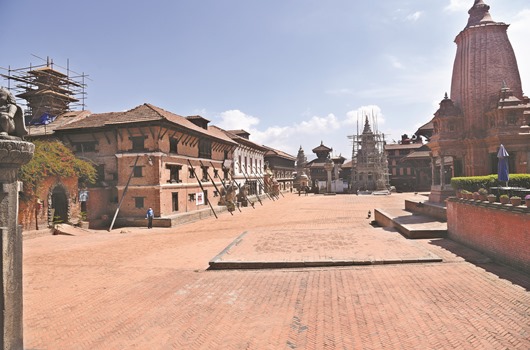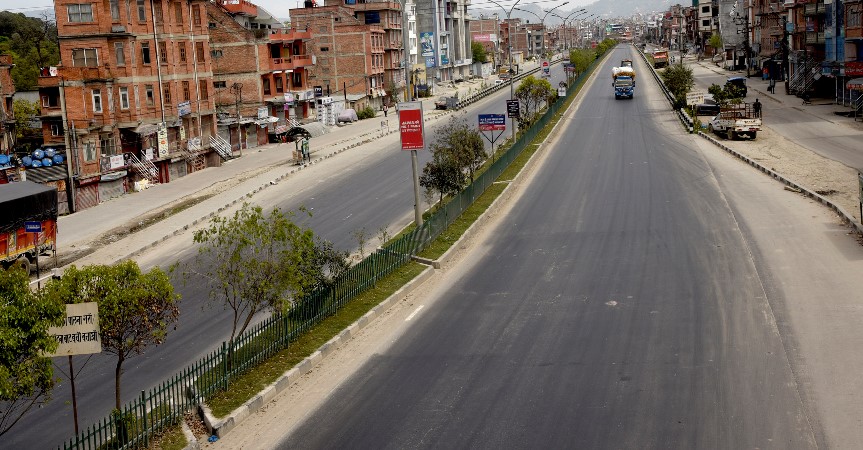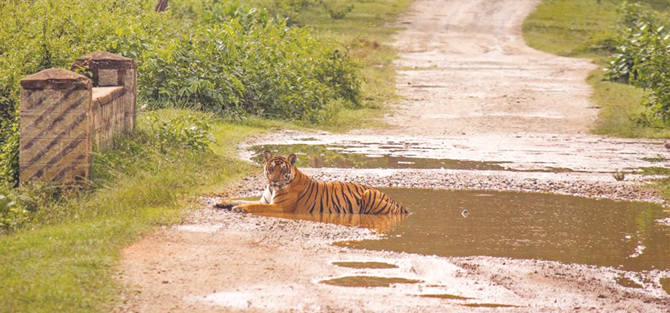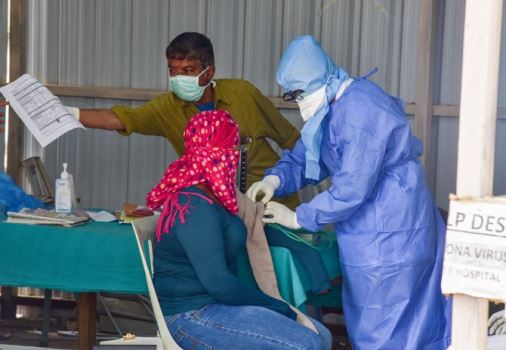Large herd of elephants enters Nepal from India
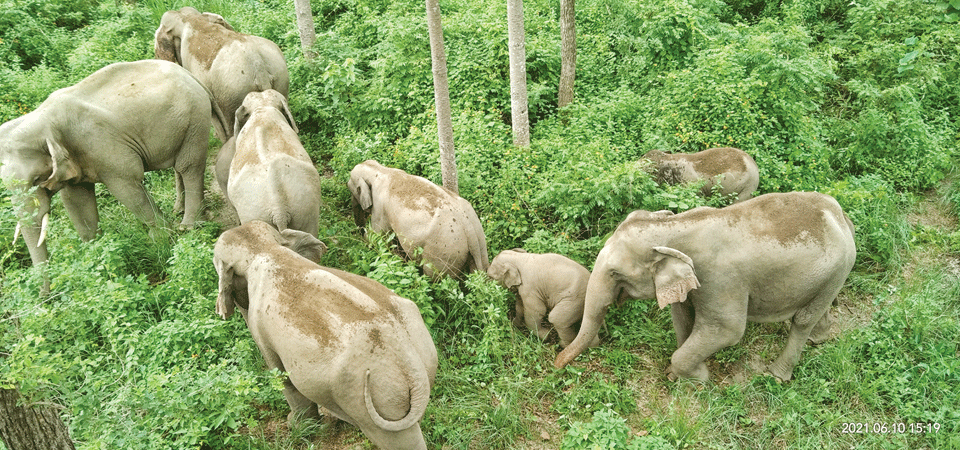
By Indira Aryal
Kathmandu, June 15: On June 10, a group of 40 to 45 elephants entered Bardiya district in Lumbini Province of western Nepal, coinciding the news stories of a group of elephants in China embarking on their unknown journey.
The elephants, ranging from calves to adults, entered Shiva Community Forest in Bardiya through Khata Wildlife Corridor from Katarniaghat Wildlife Sanctuary in India on Thursday. The distance between Bardiya National Park and Katarniaghat Wildlife Sanctuary in India is only about 10 kilometres.
According to Dr. Rabin Kanderia, conservation officer at the National Trust for Nature Conservation (NTNC), Bardiya Conservation Programme, as the monsoon approaches, elephants in India usually migrate to Bardiya through Shiva Community Forest.
They stayed in the Forest for the first day of their migration on June 10.
“The next day on June 11, they entered Bardiya National Park (BNP). They will stay here for one-and-a-half months and again return to Katarniaghat Wildlife Sanctuary in India’s Uttar Pradesh state. A few of them may remain here,” Dr. Kanderia informed.
“The seasonal migration of elephants is not new as a group of 10 to 15 elephants migrate every year from India to Nepal and this is the second time within two months the elephants entered Bardiya from India,” he said. A group of elephants was also seen in the area on May 19.
Bishnu Prasad Shrestha, chief conservation officer of BNP, said that adding the group that entered the park, the number of wild elephants in Bardiya has reached 100 to 120. “When the elephants come and stay in Nepal, they will be counted as ours and when they enter India, they will be counted as theirs,” Shrestha said.
According to him, the number of elephants included in the census is also from both countries.
The corridor is their traditional route. They walk the same path. They do not enter human settlements and do not harm anyone, Shrestha said. “They might be annoyed and harm people
if they are disturbed or find any obstruction on their route,” he said.
“Migration of such a large number at a single time might be the reason for good grassland management. We have maintained good habitat and grassland in and around the National Park,” Shrestha said.
Dr. Dinesh Neupane, wildlife expert and executive director of Resources Himalayan Foundation, said that it was extremely rare to see such a large herd of elephants entering Nepal at once.
“It is quite common to see smaller herds of elephant within the area but a large group of elephants is seen for the first time after 1994 possibly because of the lack of human movement due to COVID-19 restrictions. Dr. Neupane, a PhD in elephants, said the group does not
cause any destruction in the human settlements and stay within their annual migration areas but march throughout the villages.
Land cover in Bardiya district is predominantly forested, followed by agricultural lands. BNP is the largest protected area in southern Nepal, and home to diverse wildlife, including the Asian elephant, one-horned rhinoceros, and the Bengal tiger.
According to Dr. Neupane, residential elephants are limited to BNP due to the establishment of human settlements in and around BNP. Northward movements of elephants within BNP is prevented by steep terrain, according to a research article titled “Changes in habitat suitability over a two-decade period before and after Asian elephant recolonisation” by Dr. Neupane and his team.
Recent News

Do not make expressions casting dout on election: EC
14 Apr, 2022
CM Bhatta says may New Year 2079 BS inspire positive thinking
14 Apr, 2022
Three new cases, 44 recoveries in 24 hours
14 Apr, 2022
689 climbers of 84 teams so far acquire permits for climbing various peaks this spring season
14 Apr, 2022
How the rising cost of living crisis is impacting Nepal
14 Apr, 2022
US military confirms an interstellar meteor collided with Earth
14 Apr, 2022
Valneva Covid vaccine approved for use in UK
14 Apr, 2022
Chair Prachanda highlights need of unity among Maoist, Communist forces
14 Apr, 2022
Ranbir Kapoor and Alia Bhatt: Bollywood toasts star couple on wedding
14 Apr, 2022
President Bhandari confers decorations (Photo Feature)
14 Apr, 2022




